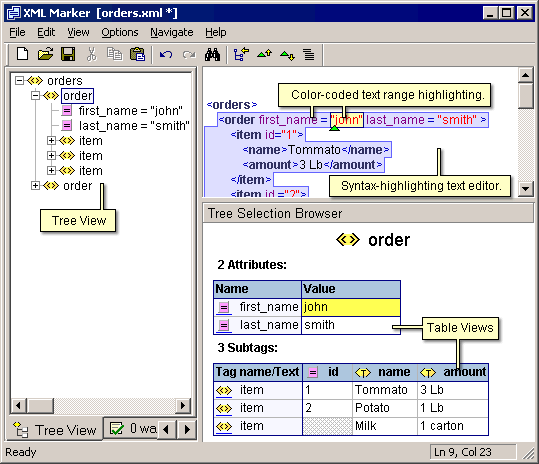the100thballoon
Emperor
- Joined
- Aug 13, 2003
- Messages
- 1,239
Anyone tried to make sense of the XML files yet? I glanced at one of them and its not too confusing, but a tutorial is definately in order. Anyone up to the challenge?



 I don't have the game yet, but try this program out... the best XML edotor I've come across... and it's free! XML Marker
I don't have the game yet, but try this program out... the best XML edotor I've come across... and it's free! XML Marker 
 )
)popewiz said:Ok, I'll try to help out a little before I go to sleep. First of all, everything we'll be modding will be in the folder marked .../Firaxis Games/Sid Meier's Civilization 4/Assets. From there just open the XML folder and look around. I decided to open up the Units folder and check out the Civ4UnitInfos.xml file. Each unit in the game has a listing just like this:
<UnitClassInfo>
<Type>UNITCLASS_HINDU_MISSIONARY</Type>
<Description>TXT_KEY_UNIT_HINDU_MISSIONARY</Description>
<iMaxGlobalInstances>-1</iMaxGlobalInstances>
<iMaxTeamInstances>-1</iMaxTeamInstances>
<iMaxPlayerInstances>3</iMaxPlayerInstances>
<DefaultUnit>UNIT_HINDU_MISSIONARY</DefaultUnit>
</UnitClassInfo>
The numbers in between reflect the total number of units of that type allowed in the entire map, for each team, and for each player. -1 means that there is no limit, and any number including 0 places a limit on that type. Try changing the number 3, starting the hindu religion in the game, and you'll see that you'll be able to build that many hindu missionaies. Anyway, I'm off to sleep now very exciting times ahead.
 and any other UU that is actually an elite unit that should be limited in the numbers that can be produced.
and any other UU that is actually an elite unit that should be limited in the numbers that can be produced. those files are huge!
those files are huge!
Hopefullly somebody who is a better programmer than me will make an editor. Until then, I guess Ctrl-F works.Zurai said:Yeah, I kinda wish they did one XML file per unit rather than one XML file with all 100+ units. It's a lot to slog through. Same with the buildings and a lot of the other "big systems".
Weasel Op said:Hopefullly somebody who is a better programmer than me will make an editor. Until then, I guess Ctrl-F works.



 ). I'm not too familar with it, but my strategy would be parsing it into a myriad of structures. The problem is making them dynamic... So, it would only be a limited use tool in that most of the stuff you add is rather static. (same as all other types of data)
). I'm not too familar with it, but my strategy would be parsing it into a myriad of structures. The problem is making them dynamic... So, it would only be a limited use tool in that most of the stuff you add is rather static. (same as all other types of data)